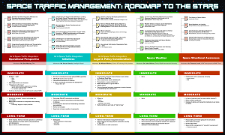Location
Jim Henderson Welcome Center, Embry-Riddle Aeronautical University - Daytona Beach
Start Date
5-11-2014 2:00 PM
Abstract
Commercial Space Transportation becomes an international business and requires landing
opportunities all over the world. Hence the integration of space vehicles in other airspace
than the US NAS is an important topic to be considered. The Single European Sky ATM
Research Programme (SESAR) is preparing the implementation of a new ATM system in
Europe. The requirements are defined by the concept of the shared Business Trajectory and
System Wide Information Management (SWIM).
Space vehicle operations are associated with the requested need for submitting an Mishap
Investigation Plan (MIP), containing responding and reporting procedures referring to
possible reentry or launch incidents or accidents. This leads to the submission of an
Emergency Response Plan (ERP), addressing information procedures about a planned
Reusable Launch Vehicle (RLV) mission of the airspace alerting and emergency services in
the areas of:
Emergency Detection
o Information relay between the Commercial Space Transportation (CST )
vehicle operator and the Traffic Flow Management (TFM )
Response Organization
o Due to the fact that orbital CST missions may need to be aborted anywhere
around the earth, a global alerting function has to include segregated foci of
the involved response organizations, from international down to regional or
even local reaction units.
This paper describes the integration of the above mentioned services in the Air Traffic
Management (ATM) information exchange concept of SWIM. It proposes an implementation
concept via the world wide use of Remote Tower Operations (RTO) for surveillance of safe
landings at spaceports far away from the launch/start site.
Area of Interest
NAS Integration
Commercial Space Transportation and Air Traffic Insertion - SESAR Requirements and the European Perspective
Jim Henderson Welcome Center, Embry-Riddle Aeronautical University - Daytona Beach
Commercial Space Transportation becomes an international business and requires landing
opportunities all over the world. Hence the integration of space vehicles in other airspace
than the US NAS is an important topic to be considered. The Single European Sky ATM
Research Programme (SESAR) is preparing the implementation of a new ATM system in
Europe. The requirements are defined by the concept of the shared Business Trajectory and
System Wide Information Management (SWIM).
Space vehicle operations are associated with the requested need for submitting an Mishap
Investigation Plan (MIP), containing responding and reporting procedures referring to
possible reentry or launch incidents or accidents. This leads to the submission of an
Emergency Response Plan (ERP), addressing information procedures about a planned
Reusable Launch Vehicle (RLV) mission of the airspace alerting and emergency services in
the areas of:
Emergency Detection
o Information relay between the Commercial Space Transportation (CST )
vehicle operator and the Traffic Flow Management (TFM )
Response Organization
o Due to the fact that orbital CST missions may need to be aborted anywhere
around the earth, a global alerting function has to include segregated foci of
the involved response organizations, from international down to regional or
even local reaction units.
This paper describes the integration of the above mentioned services in the Air Traffic
Management (ATM) information exchange concept of SWIM. It proposes an implementation
concept via the world wide use of Remote Tower Operations (RTO) for surveillance of safe
landings at spaceports far away from the launch/start site.

